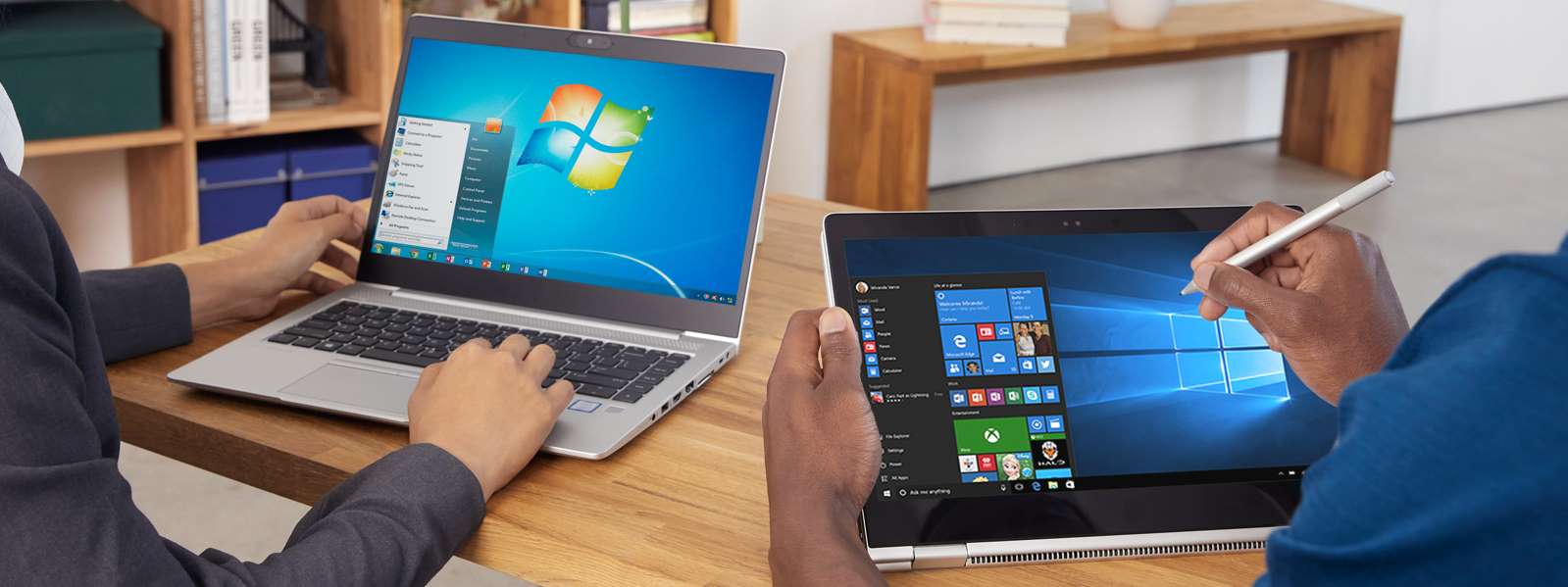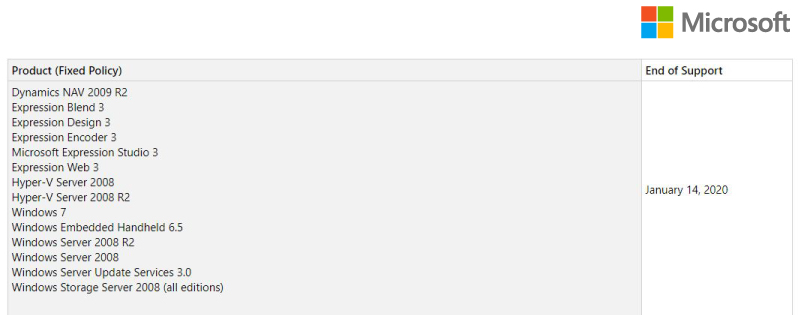Microsoft has urged users to upgrade from Windows 7.

4 minute read | Author: Ryan Gambrill, Marketing Manager, LCS Group
 Support for Windows 7 was officially withdrawn last week, on 14th January 2020 as planned. Despite official statements and warnings from Microsoft over the past few years, it’s estimated that 200 million PC’s are still running Windows 7. As experts in the cyber security field, it’s fair to say this makes us uneasy.
Support for Windows 7 was officially withdrawn last week, on 14th January 2020 as planned. Despite official statements and warnings from Microsoft over the past few years, it’s estimated that 200 million PC’s are still running Windows 7. As experts in the cyber security field, it’s fair to say this makes us uneasy.
What does it mean?
Windows 7 has reached end of life (EOL) and now isn’t supported by Microsoft. Put simply, if a new security vulnerability or software bug is uncovered in Windows 7, Microsoft is no longer obliged to to patch or fix the issue on the unsupported operating system; and that’s something that could put individuals and organisations that still rely on Windows 7 in danger from cyberattacks, hacking and malware. The business world witnessed a very similar trend with Windows XP back in 2014.
It’s not just Windows 7
Further to the Windows 7 announcement, businesses in particular will be affected by other products which also became EOL on January 14 2020, specifically Server 2008 R2 and Small Business Server (SBS) 2011. Should your system still run any of this technology, it is now imperative that you speak to a professional IT company and discuss options for upgrading your system.
Not sure if you’re affected?
At LCS Group, we are very passionate about taking our customers (directors in particular), and educating them using jargon free language to understand the basics of their own IT infrastructure.
Whilst you may have the opinion that your IT is in good hands and you don’t need to know the ins and outs, without a basic understanding of the core technology your system runs on, how can you be sure that its as effective as can be? The biggest cost to most businesses is staff salaries. Surely empowering your staff with the right technology complete their duties efficiently is one of the best decisions for getting the most productivity from your greatest investment?
Upgrading from Windows 7 – Your options explained.
You have to replace all of your PC’s, right?
It is likely that many IT service providers will be banging the “Replace all Windows 7 PC’s” drum, but that may not always be the most appropriate or cost-effective solution for all.
In terms of making the decision to replace or upgrade your hardware to accommodate Windows 10 here are a few things to consider:
The cost of upgrade versus replacement
If hardware is really old (as a guide older than 5-6 years) then it may well be worth considering replacing those PC’s as it will likely make the most financial sense to do so.
When we consider the cost of a Windows 10 upgrade, which can be anywhere between £90 up to £160 per PC (for legitimate software, the installation costs and potential downtime), replacement can often be the most sensible choice.
That said, if a PC is borderline and has a reasonable processor then upgrade could well be the best option. Upgrading to 8Gb of memory and a 500Gb SSD drive could cost less than you think, coming in well under £100.
Additionally, using the right techniques to automatically pre-build the hard drives before fitting in the PC’s could also save substantial installation costs and user downtime, making this a very viable and attractive option.
With the advent of Cloud computing, hosted platforms and an array of internet-based applications such as Office 365, it could be an opportunity to evaluate this option as the power of PC’s in this scenario is much less important. The considerations for looking at a Cloud solution is a discussion in it’s own right and we will be covering that in a future blog. Suffice to say that you should at least have this conversation with your IT vendor or shop around to get informed feedback to assess if this option could be beneficial for you.
Is there a way to upgrade to Windows 10 for free?
Well interestingly, the answer to that is potentially yes. Even though the official date for the end of the free upgrade to Windows 10 was back in July 2016, it seems that under the right circumstances and using the right techniques, Microsoft are still processing these free upgrades.
As long as you have a legitimate Windows 7, 8 or 8.1 product key there is a good chance this could work for you.
I would not recommend you go ahead and attempt this yourself but if you speak to your IT service providers, they should be aware of this process and how appropriate and successful it is likely to be in your case.
Could this be an opportunity?
 In our experience, it is usually only when something goes wrong or there is a forced decision to be made like this one, that SMB’s actually take some time to review their current IT systems and options.
In our experience, it is usually only when something goes wrong or there is a forced decision to be made like this one, that SMB’s actually take some time to review their current IT systems and options.
Because this End of Life situation draws a line in the sand and only the most foolhardy will do nothing, it presents a great opportunity to review your technology platform and take advantage of the many ways it can add substantial value to your business and your workforce.
It never ceases to amaze me when we evaluate a prospects system after they approach us for advice about a Windows 7 upgrade, as we almost always find many other areas of risk and opportunity.
Business owners are often surprised at the reality of the state of their IT systems that they were previously oblivious too, so the Windows 7 situation can indeed act as a great catalyst for positive change in so many other ways.
If your current IT provider does not seem open or flexible to all options, then it may be worth shopping around, if nothing else you will get a benchmark against what you have in place. By getting alternative opinions and ideas you can at least challenge your provider to ensure you get the very best solution to manage your Windows 7 replacement as well as other positive benefits as a by-product.
This is even more likely if you are also using other Microsoft operating systems or applications that are also coming to end of life in 2020, click here to see the full list on the official Microsoft pages.
https://support.microsoft.com/en-gb/help/4470235/products-reaching-end-of-support-for-2020






